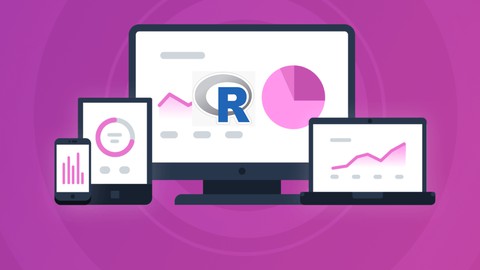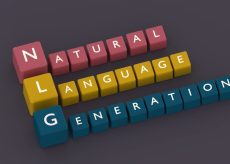Graphics in R: Data Visualization and Data Analysis with R


Price: 19.99$
Learn data visualizations by projects that use real world datasets in the professional industries such as finance, marketing, sales etc. This course will help you master data visualizations techniques and create graphics in R using packages such as ggplot2, lattice package and ggvis package from shiny for adding interactivity into you R graphics. Real world datasets are used for projects. So, not only will you master the graphics in r, you will also be able to interpret your graphics and make an impressive plots. All done by yourself. Why learn data visualization with R?Data Visualization helps people see, interact with, and better understand the data. Whether simple or complex, the right visualization can bring everyone on the same page, regardless of their level of expertise. Almost all the professional industries benefit from making data more understandable. Every STEM field benefits from data analysts that are able to understand data-and so do fields in government, finance, marketing, history, consumer goods, service industries, education, sports, and so on. As the “age of Big Data” and Artificial Intelligence (AI) kicks into high gear, visualization is an increasingly key tool to make sense of the trillions of rows of data generated every day. Data visualization helps to tell stories by curating data into a form easier to understand, highlighting the trends and outliers. A good visualization tells a story, removing the noise from data and highlighting useful information. With R tools such as ggplot2 , lattice package, we can create visually appealing graphics and data visualizations by writing few lines of code. For this purpose R is widely used and it is easy to use and understand when it comes to data visualizations, good appealing graphics, data analysis (dplyr) etc. Through R, we can easily customize our data visualization by changing axes, fonts, legends, annotations, and labels. In this data visualization course you will learn the following: R for beginners: Vectors, Matrices, Arrays, Data frames and Lists Factors in R: Create factors, understand factor levelsregular expressions in r: grep and gsub functionsreshape package for data analysis: melt and casting functionstidyr package for data analysis: gather and spread functionsdplyr package for data analysis: merge functions, filter, select, sort, arrange, pipe operator etc After Mastering R Programming for beginners and Data Analysis, you will begin creating graphics with r and visualizations. Here is the summary overview of what you will learn: Graphics in R: Beginner Level Graphic Devices & Colors The Plot Function Low Level Functions Data Visualization in R: Beginner Level Barplots & Pie Charts Histograms in r Box and Whisker Plots Scatterplots Intermediate Data Visualization & Graphics in RWhat is ggplot2?qplot() functionggplot() function Data Visualization with Lattice Package Lattice Graphics High Level Functions in lattice package Lattice Package panel functions Going further with data visualization How to Handle and switch between graphics Controlling layout with layout functionggplot2 scales and guides: scale x continous, scale y continous, scale color manual, scale fill manualscale shape manual, scale shape manual, scale alpha continousguide legend, gudei colorbarggplot2 faceting: facet wrap() vs facet grid()ggplot2 themesggvis package: scatterplot with layers, interactive plots with input slider(), add legend(), add axis etc After completing the course you will receive the electronic certificate that you can add on your resume or CV and Linked In profile from Udemy. The access to this course is also lifetime, hence you will learn at your own pace. The course is also updated regularly to ensure it meets all the students demands and students enrolled are learning latest version of r and r studio I am certain with all the material covered in this course you will be able to advance you Data visualization and Data Analysis skills! See you in the first lecture!






